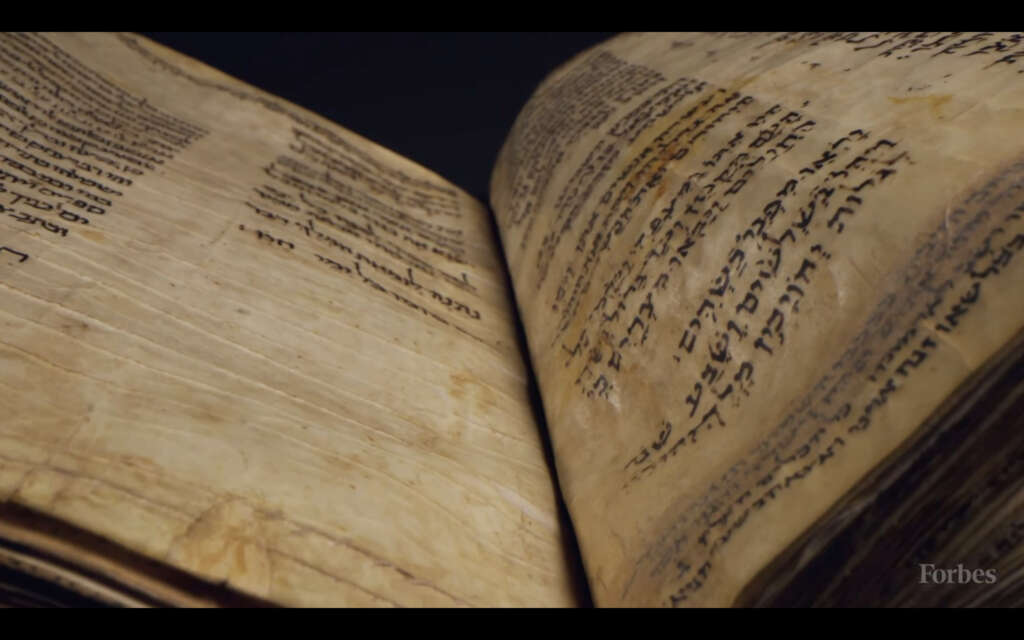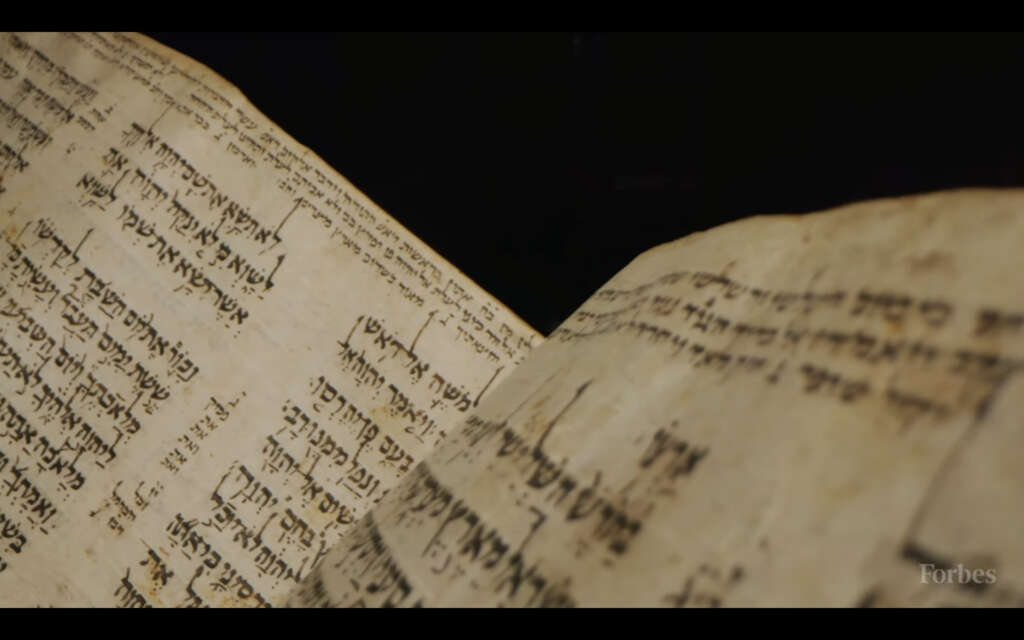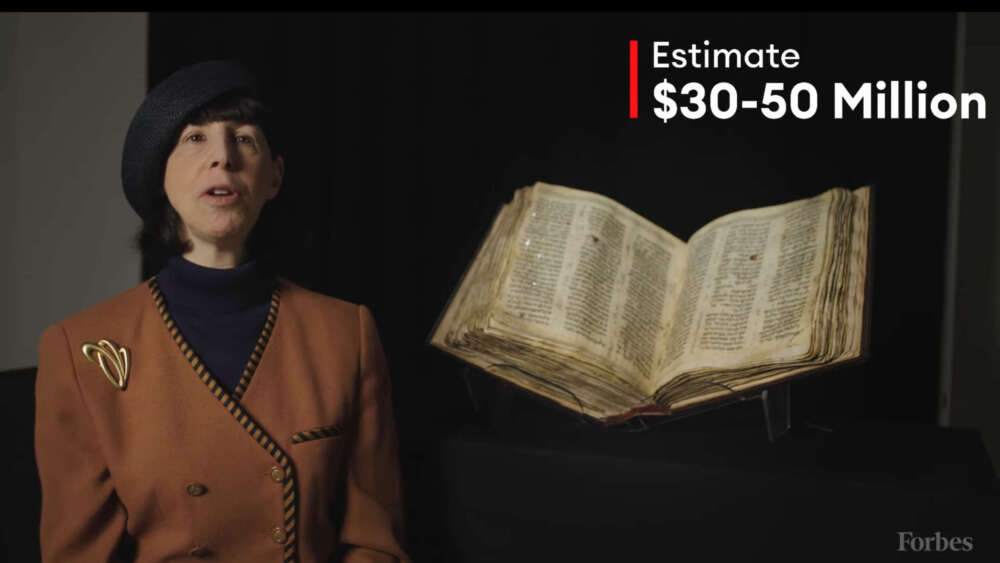It's official – the Bible is the most precious book ever
Thousand-year-old Bible could fetch up to $50 million at auction
In what could be a sign that the world does value the Bible after all, a 10th-century Hebrew Bible is being tipped to become the most valuable book sold at auction when it goes under the hammer at Sotheby’s in New York in May.
“It’s one of the world’s greatest treasures,” Sharon Liberman Mintz, a senior Judaica specialist at Sotheby’s, says of the Codex Sassoon in a video accompanying an article in Forbes magazine.
“The estimate for Codex Sassoon is $US30 to 50 million. This is the highest price that we’ve ever placed on a book or manuscript, but we believe that this estimate correctly reflects the signal importance of this great treasure.”
If the winning bid exceeds the $US43.2m paid two years ago for a rare first-edition copy of the US Constitution, it could become the most expensive historical document ever sold at auction.
 Currently on display at a museum in Tel Aviv, the hefty 12kg, 15cm-thick stack of centuries-old parchment is the earliest, most complete Hebrew Bible ever discovered. The Codex Sassoon is the earliest surviving example of a single manuscript containing all 24 books of the Hebrew Bible [Old Testament] with punctuation, vowels and accents.
Currently on display at a museum in Tel Aviv, the hefty 12kg, 15cm-thick stack of centuries-old parchment is the earliest, most complete Hebrew Bible ever discovered. The Codex Sassoon is the earliest surviving example of a single manuscript containing all 24 books of the Hebrew Bible [Old Testament] with punctuation, vowels and accents.
“Here we have a manuscript which has no equal; it has no parallels,” says Mintz.
“There aren’t any other early witnesses which contain this entire text. What we have here is a remarkable witness to the transmission of the most exact, accurate text of the Hebrew Bible, the divine word of God. It is more complete than any other manuscript of this period.”
“What we have here is a remarkable witness to the transmission of the most exact, accurate text of the Hebrew Bible, the divine word of God.” – Sharon Liberman Mintz
She explains that this manuscript is so important because it is the earliest extant example of every book of the Bible in its stable and standardised form. The text of the Hebrew Bible remained in flux until the early Middle Ages when Jewish scholars known as Masoretes began to create a body of notes that standardised it.
“The Dead Sea Scrolls contain portions, sometimes only fragments of biblical texts. There’s actually only one book of the entire Hebrew Bible, which is complete, and that is the great scroll of Isaiah,” says Mintz.
“These scrolls, however, do not contain any vowel points or any cantillation marks. When these Bibles emerged, they included all the cantillation marks, which explained how one is to chant the text, and often how you chanted. It’s not just about the singing, but it’s also about where you stop and where you start in a sentence, which can make all the difference in the interpretation. Perhaps most significantly, it contains the vowel points above and below.
“Each word on the page are all the different Hebrew vowels that allow us to understand exactly what word is meant in every single book of the Hebrew Bible – every verse, every book of the Hebrew Bible. While this book is missing 15 out of the 929 chapters that make up the Hebrew Bible, it is essentially complete. Every single book of the Hebrew Bible is found within the 729 pages of Codex Sassoon.”
 Written in the late ninth or early tenth century, the Codex Sassoon was probably commissioned by a wealthy patron in Egypt or the Levant, who hired a single scribe to work on it for more than a year. Over the following centuries, a handful of the Bible’s owners added sale records to its pages, allowing experts to trace its provenance.
Written in the late ninth or early tenth century, the Codex Sassoon was probably commissioned by a wealthy patron in Egypt or the Levant, who hired a single scribe to work on it for more than a year. Over the following centuries, a handful of the Bible’s owners added sale records to its pages, allowing experts to trace its provenance.
“This book has been owned privately by individuals as witnessed by the deed of gift from around the year 1000,” says Mintz in the video.
“Also, it was purchased by David Solomon Sassoon in 1929, and it’s also been owned by institutions. Such as a synagogue in Makisin [in present-day Syria] around the 13th and 14th century, and what’s exciting to me is we’ve seen both institutions and private individuals approach us and express their interest from across the world.
“Every single book of the Hebrew Bible is found within the 729 pages of Codex Sassoon.”
Mintz explains that it took considerable thought to arrive at the pre-auction estimate for Codex Sasson.
“We thought about other comparable books and manuscripts that have sold in the past. For example, Codex Leicester, which is the Da Vinci Codex, the manuscript [scientific writings of Leonardo Da Vinci], which is now owned by Bill Gates and sold for $US30 million [in 1994]. We thought about the Constitution, which Sotheby’s sold in 2021, of which there were 15 copies, sold for $US43 million.”
Despite its age, the Codex Sassoon is in remarkably good condition. Its parchment pages were made with an estimated 200 sheepskins which can last forever if kept at moderate humidity.
Surprisingly, it’s better not to wear gloves when you touch this ancient book.
“It’s much better to actually turn the pages with perfectly clean hands.”
“One of the questions I asked is how you can turn the pages of this manuscript without gloves. Conservators around the world believe that if you put gloves on, you lose the tactility. It’s much harder to turn the pages and you might end up ripping something or bending one of the leaves in an effort to turn the pages. So current conservational thinking is that it’s much better to actually turn the pages with perfectly clean hands.”
Mintz believes the Codex Sassoon will appeal to people of many religions who feel “a deep connection when they open up and look at the pages and can see a millennium of the text of the Hebrew Bible sitting in front of them.
“It’s in remarkably good condition and we think that it could be bought either institutionally or privately or that could be private donors who wish to purchase it for an institution. I think everything is possible at this point.”
Email This Story
Why not send this to a friend?


